Firebase is often the first platform that comes to mind for developing mobile and web applications without extensive coding. However, while it offers many useful features, Firebase isn’t open source. This means that you have little control over your application development.
Fortunately, there are excellent Firebase alternatives that offer more customization and control. For instance, you can access more hosting options, work with multiple databases, and scale your app easily.
In this post, we’ll take a closer look at the drawbacks of using Firebase. Then, we’ll discuss why you might consider switching to a different solution. Finally, we’ll explore 7 of the best Firebase alternatives. Let’s get started!
The Drawbacks of Using Firebase for Application Development
Firebase is a development platform that helps you build and grow apps and games. It’s backed by Google and used by companies such as Duolingo, Wattpad, Trivago, and The New York Times:
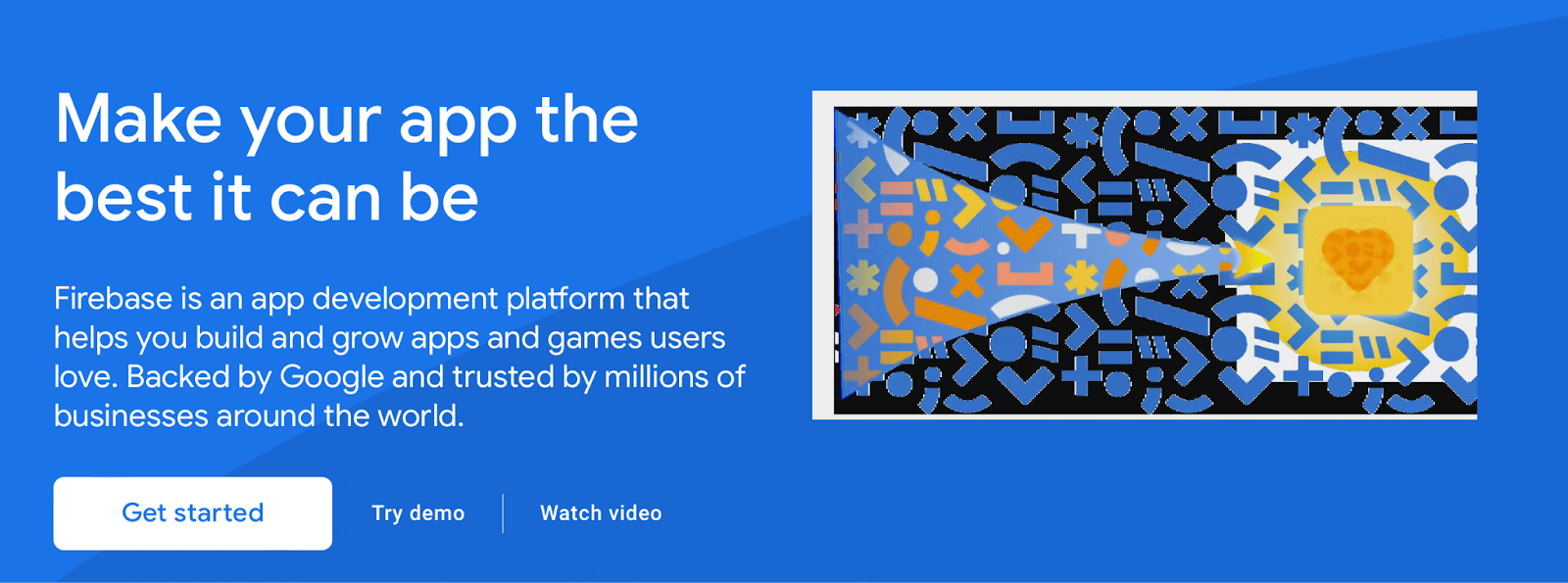
You can use the platform to personalize your onboarding process, grow user engagement, and add new types of functionality. However, for all its advantages, many drawbacks make Firebase a less attractive option as a development platform.
1. Vendor Lock-In
With vendor lock-in, you’ll have little to no control over your application’s source code. Not only can this be frustrating for a developer, but it can also make venture capitalists and angel investors reluctant to fund your startup.
Additionally, since Firebase is a closed-source, scalability can be limited. Therefore, you might be better off finding an open-source framework that can provide more flexibility.
2. Cost
With Firebase, the free plan is only sufficient for small applications. Once your app grows, server costs can increase dramatically, which may not be sustainable for your budget.
Since Firebase does not offer a fixed-price structure, you’ll be billed based on your application’s server resources. You also can’t set a maximum monthly budget. Therefore, you can quickly rack up a hefty bill if you’re not careful.
3. Hosting
Firebase is supported by Google, so you’re limited to using the Google Cloud Platform. For complex applications, this isn’t always ideal. It means that you can’t run your applications on dedicated instances or customize your server settings.
4. Database
Firebase works with a closed-source NoSQL database. It offers very limited querying and indexing capabilities. As such, it’s difficult to complete certain tasks, such as migrating data (which is easier with a SQL database).
What’s more, you can’t perform operations to get active users or use batch operations to update documents. These limitations make Firebase less efficient and intuitive than it could be.
Why You Should Consider Switching to a Firebase Alternative
While Firebase is a popular platform, it’s not as user-friendly or flexible as it could be. Here are the main reasons you should consider using a Firebase alternative:
- Hosting options. With Firebase, you’re restricted to the Google Cloud Platform. However, with an open-source platform, you can deploy your application to any cloud solution of your choosing.
- Flexibility. With many Firebase alternatives, you can control your code completely without the risk of vendor lock-in.
- Continuous improvement. A Firebase alternative with an open-source framework will be reviewed regularly to ensure it meets the security standards. Plus, you can often access various bug fixes and other improvements to benefit your application.
- User-friendliness. As we discussed, coding and app development isn’t very intuitive or efficient with Firebase. By switching to an open-source platform, you can generally edit code much faster.
- Accessibility. Open-source Firebase alternatives are free to download and publicly accessible.
- Scalability. By switching to an open-source Firebase alternative, you can achieve greater flexibility. Additionally, you can access more support for stability, helping you grow your application.
Furthermore, when developing an application, you can benefit from using a development platform or local environment. Here you can test out changes without affecting your live environment. DevKinsta is an excellent option:
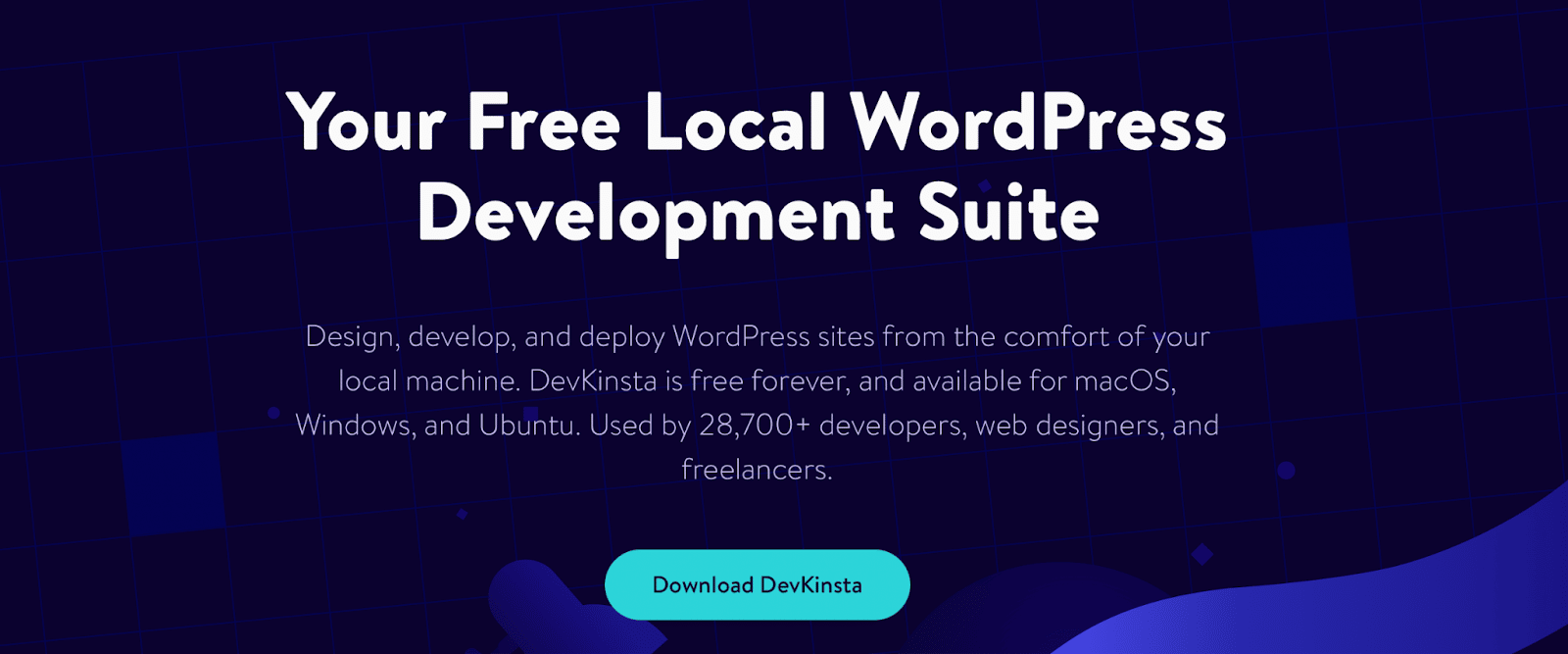
Our suite is powered by Docker, which has a lower-resource footprint and near-native performance. You can take advantage of local database tools to develop themes, plugins, and custom websites on your local system. Then, when you’re ready to go live, you can push your application directly to Kinsta.
The Best Firebase Alternatives (7 Top Options)
Now that you know why you should consider switching to a Firebase alternative, here are 7 top picks to help you choose the best platform for your application!
1. Kinsta

Your application development deserves the best of everything. This is exactly what you get when you make the choice to join over 55,000 other developers and digital entrepreneurs on Kinsta’s Platform as a Service (PaaS).
Kinsta offers 20 locations on 5 continents. Each location offers the fastest Google C2 machines running on Google’s Premium Tier network. Whether you are a CTO, engineer, or developer, Kinsta provides a solid infrastructure that is fast to set up, already tested, reliable, and ready to scale.
All of your favorite frameworks are supported. This includes PHP, Node.js, Ruby, Java, Python, GO, and Scala. Kinsta gives you the ability to choose from 2 different build options. You can set up your container image automatically, and they will determine the correct buildpack, or you can use your own custom Dockerfiles.
They offer a custom dashboard where users are able to track deployments, runtime, buildtime, and bandwidth usage.
Kinsta has provided a new home for modern web applications that is easy to use. Simply connect your GitHub account and choose a repository. You can deploy your application automatically or manually, and build, scale, and run your processes separately.
Features
- 24/7 global live chat support is just a click away.
- Google C2 machines and Premium Tier network ready to scale any web application.
- Backed by Cloudflare integration that provides best-in-class firewall, DDoS protection, and SSL.
- Easily route traffic to domains with support for custom SSL after setup.
- Deploy straight from GitHub.
- Applications run at maximum efficiency because Kinsta manages distribution across their machines with GKE (Google Kubernetes Engine).
- Build using PHP, Node.js, Ruby, Java, Python, GO, and Scala.
Pricing
Kinsta uses a resource-based pricing model. You have full control to build and run apps any way you want to. Since their pricing is based on usage, you pay only for what you use. Pricing is simple, transparent, and predictable.
2. Back4App
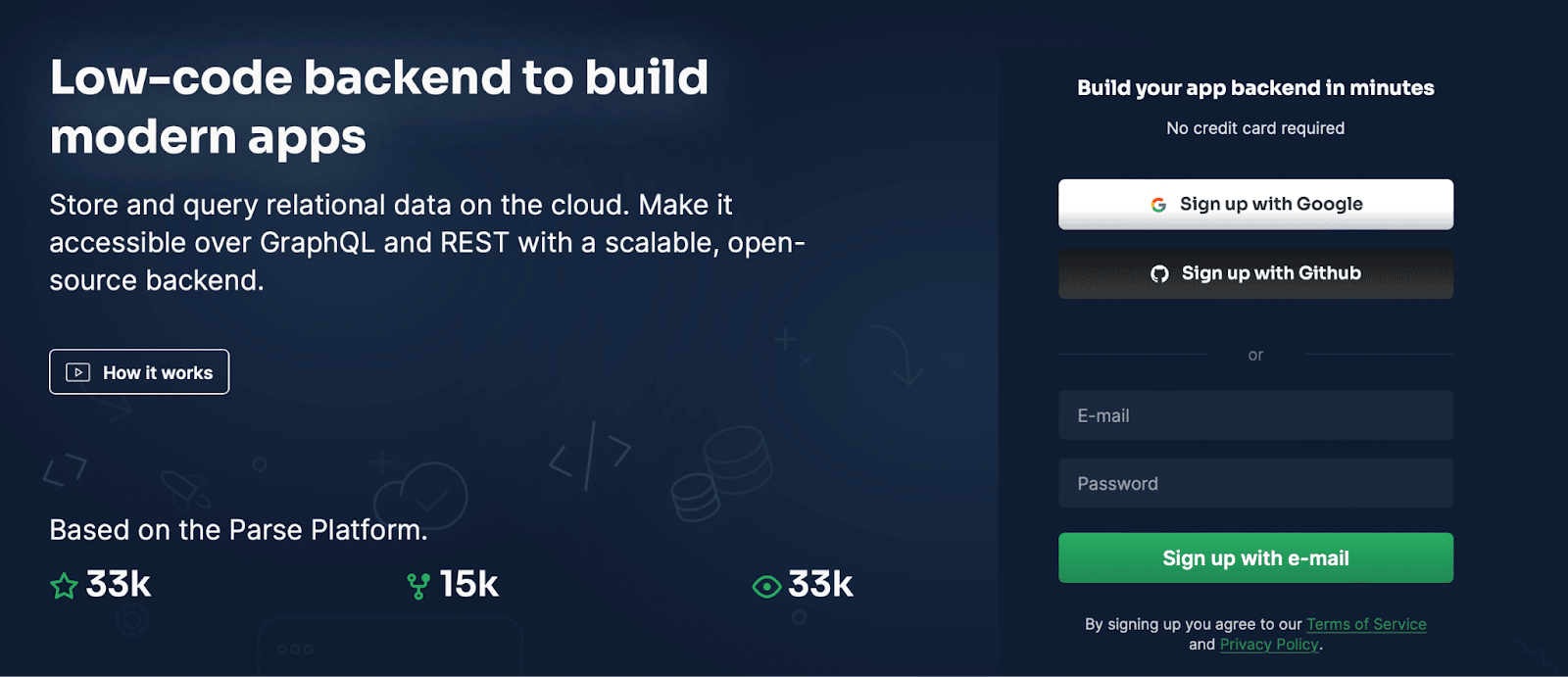
Back4App is based on the Parse platform but marketed as a “low code” alternative to Firebase. Its interface is organized like a spreadsheet, making it intuitive and easy to use.
It also offers more databases than Firebase, so you’re not locked into just one vendor. Instead, you can find more options that enable quick data syncing and updates. Plus, you can get a fully managed service, including 24/7 support, a CDN, and built-in caching for faster performance.
Features
- Utilizes GraphQL and Rest API for all database operations
- Offers live querying functionality, enabling you to execute real-time sync and provide users with fresh data
- Uses a relational database, making it easy to query relational data, perform geo queries, and aggregate functions
Pricing
Back4app is free for 25K requests a month with 250MB of data and 1GB of file storage. Paid plans start at $25 per month.
3. Parse
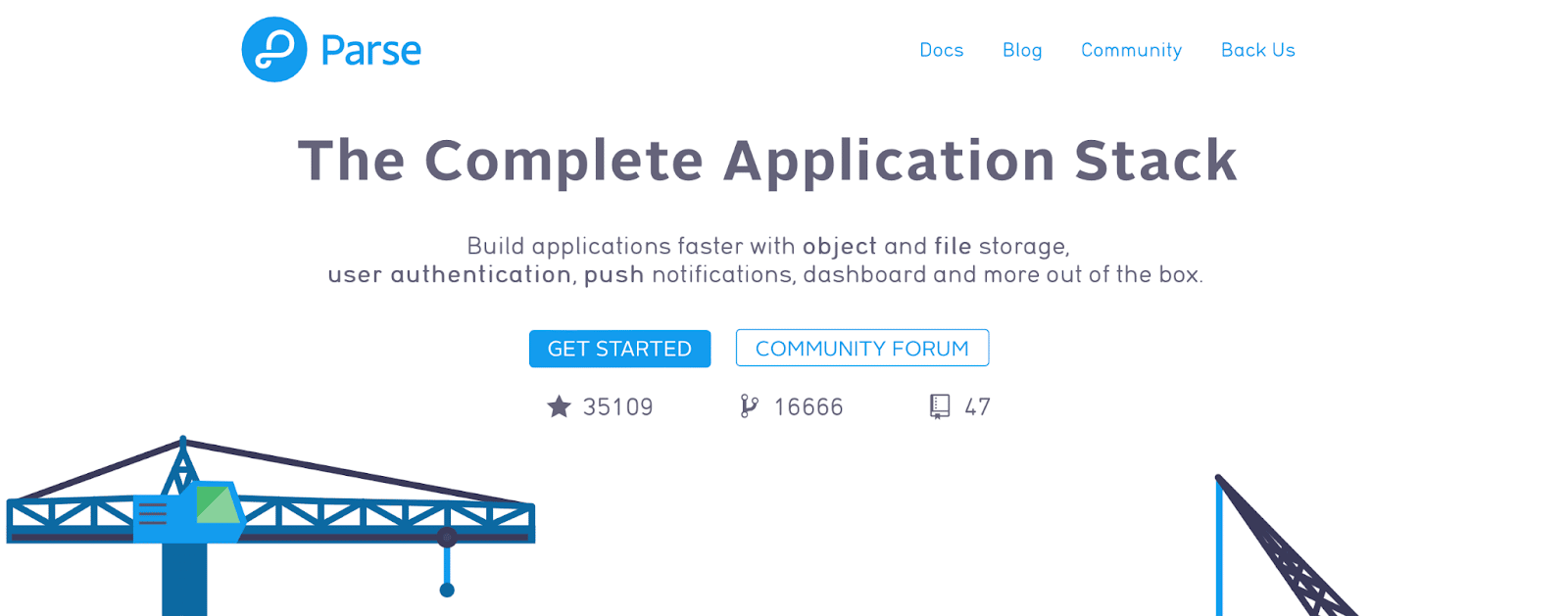
Parse is one of the most popular frameworks for developing applications on a budget since it’s open-source and free. Better yet, it’s easy to implement and use, runs on any cloud, and you can both test and develop your app locally using Node.
Self-hosting is also possible since you can download and run Parse on your own server. Additionally, Parse has a dedicated community of developers, enabling you to benefit from expert support and quick troubleshooting.
Features
- Uses MongoDB or PostgreSQL database (as opposed to just one NoSQL database with Firebase)
- Provides a simple authentication process with social logins and email notifications (without using third parties)
- Enables you to create end-to-end GraphQL APIs with minimum effort
Pricing
Free.
4. Kuzzle
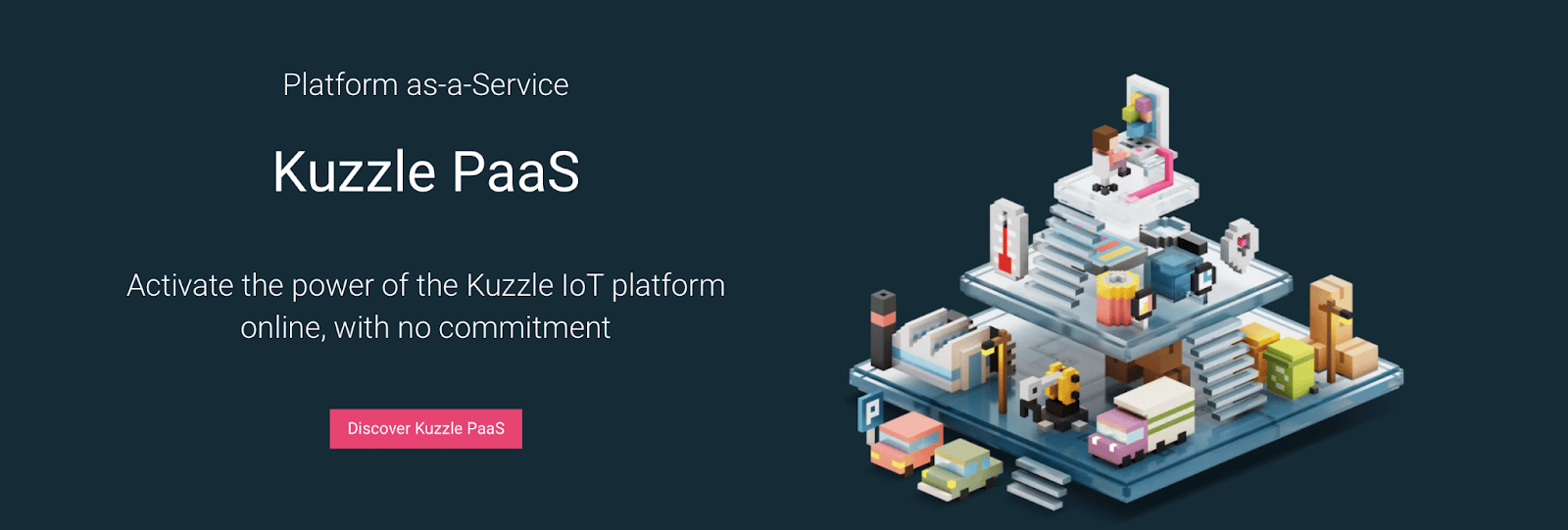
Kuzzle is known for improving your Time to Market (TTM), claiming to increase TTM by up to 40 percent. It offers a scalable server, which is great for fast-growing apps. You can also benefit from multiprotocol API, administration console, geofencing, and fast search.
Additionally, you can scale on-premises and on the intranet, including any cloud service, Linux or Docker infrastructure, and IoT hardware. Therefore, Kuzzle is a flexible solution that enables you to work in the way that best suits you.
Features
- Access real-time query subscription.
- Benefit from real-time Pub/Sub engine to provide a better User Interface (UI).
- Use cluster mode to configure Kuzzle in a cluster of two+ nodes for high availability and deployment at scale.
Pricing
You can download the Kuzzle backend free or get a subscription to the Kuzzle-hosted and managed platform. Paid plans start at $80 per month.
5. Supabase

Supabase describes itself as an “open-source Firebase alternative”. It relies on a relational database, using PostgreSQL for functionality and scalability. You can perform complex queries or text searches. Plus, you can import data easily using a .sql file.
Better yet, with Supabase, you gain the flexibility to host your app on a local machine, in a cloud service provider, or as a Docker container.
Features
- Integrates with third-party authentication services like Google, Apple, and Facebook (and supports enterprise logins such as SAML)
- Access real-time database listeners
- Utilizes a JavaScript library and APIs
Pricing
Supabase is free for two projects with a 500MB database and 1GB file storage. Paid plans start at $25 per month.
6. AWS Amplify
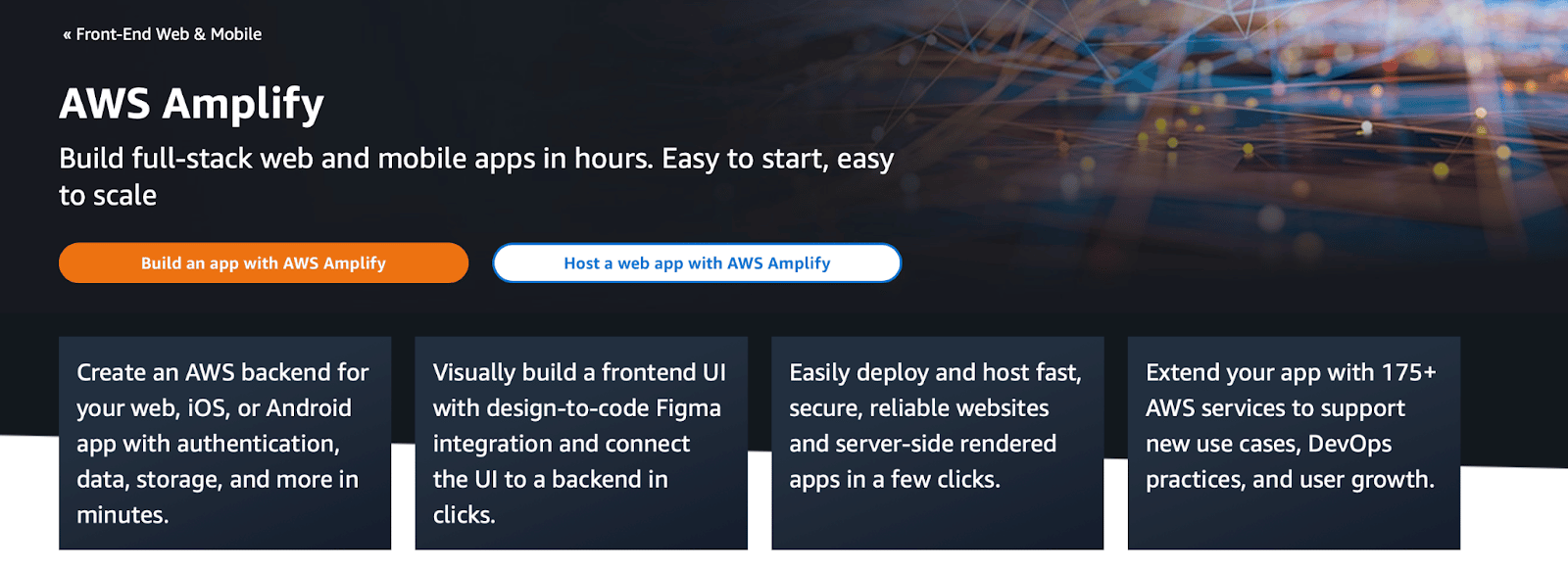
AWS Amplify is Amazon’s Cloud platform service. It provides a set of tools that you can use together or individually. You can set up secure authentication quickly with Amplify Auth. Meanwhile, you can control who has access to your apps thanks to AWS’s native authorization capabilities.
What’s more, AWS Amplify is particularly suited to artificial intelligence/machine learning. Additionally, it’s a great framework for onboarding flows, real-time collaboration, and targeted push notifications. A unique feature of the platform is that you can build your front-end UI visually with design-to-code Figma integration.
Features
- Supports many frameworks such as JavaScript, Vue, Next.js, Angular, and mobile platforms like iOS, Flutter, Android, React Native
- Enables you to extend your app with over 175 services to support new use cases, DevOps practices, and user growth
- Lets you connect your app to new or existing AWS backends
Pricing
You can access the free tier, which includes 1000 build minutes per month and 5GB of storage. The free plan expires after a year, and then you’ll have to pay as you go.
7. Backendless
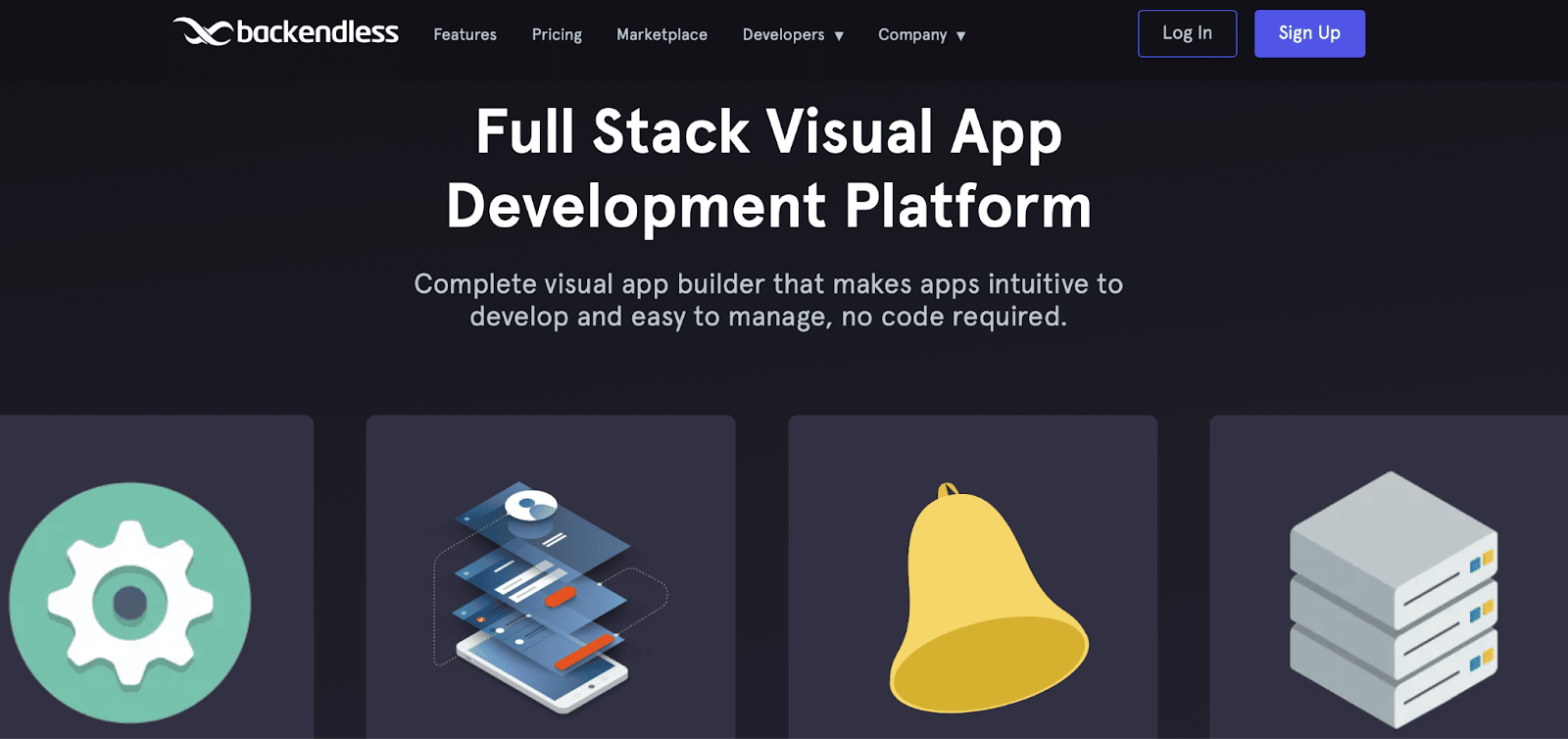
Backendless is a visual app development platform. Since it’s codeless, it uses a visual frontend builder to create backend logic, making it easy to develop and manage apps.
You can also access many more hosting options, including cloud hosting, self-hosting, and dedicated servers. Better yet, Backendless is an entirely flexible and customizable option, providing cloud code in three forms. For instance, you can use cloud code timers, API events handlers, and API services to customize your backend solutions.
Features
- Use extendable APIs that are easy to manage and use.
- Access a dynamic database that combines the best of SQL and NoSQL.
- Take advantage of SQL-driven conditional delivery across platforms.
Pricing
The free plan is only available upon completion of Backendless Missions. Alternatively, you can unlock access through the Backendless marketplace. Paid plans, on the other hand, start at $25 per month.
Summary
While Firebase is an established platform that enables you to develop and launch your application, it has some limitations. Its closed-source nature means that you have no control over your app’s source code and little freedom regarding hosting options.
That’s why it could be a good idea to find a Firebase alternative that offers more flexibility and control. For instance, you can access three kinds of hosting (including a dedicated server) with a platform like Backendless. Meanwhile, you can access SQL databases with Supabase, enabling you to perform complex queries and text searches.
DevKinsta is our free suite of development tools that helps you build, test, and deploy applications. It provides a local environment for developing custom sites, plugins, themes, and more. Plus, you can benefit from an open-source database and deploy it to one of Kinsta’s data centers worldwide. Get started with Kinsta’s fast, secure, and scalable Application Hosting today and get $20 off your first month.


